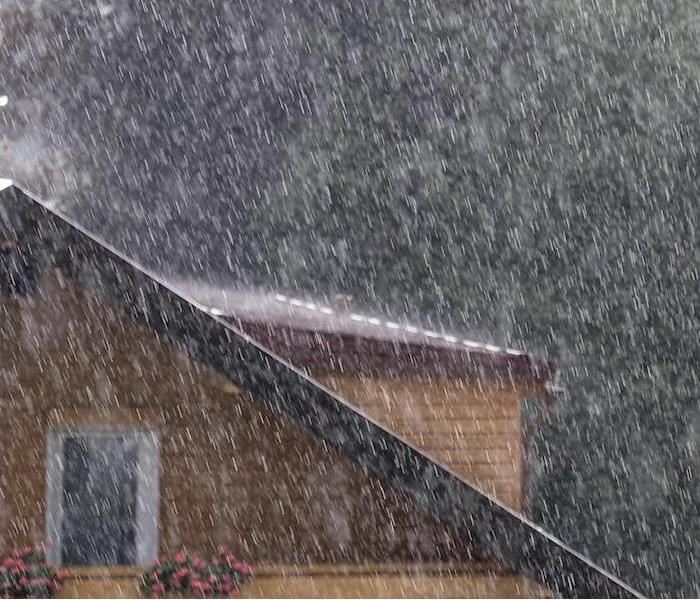Check These Common Spots for Water Damage After Heavy Rainfall at Your Saugerties Home
10/14/2020 (Permalink)
 Heavy rains can cause serious water damage. SERVPRO of Western Dutchess County's highly trained water damage pros can fully restore your home.
Heavy rains can cause serious water damage. SERVPRO of Western Dutchess County's highly trained water damage pros can fully restore your home.
Sustaining household water damage is an unfortunate event regardless of the type and can be especially disheartening and stressful when the damage itself has snuck up on you.
Following periods of heavy rainfall, we often have homeowners call in with water damage that may have been going on for ages that they are just now noticing. Understanding how rain can cause water damage can help you be aware of where to check in order to avoid a compounding problem.
Know Where to Check for Leaks Following Heavy Rainfall
Around clogged gutters. Clearing debris from your gutters is best to do every six months as it is a great way to be proactive against water damage. Debris can trap water into your gutters, where it can work its way into your home’s roofline and cause damage over time. This is also essential for winter as ice damming from gutters can cause serious interior damage as well.
Leaks around windows and doors. A home’s exterior seals will wear down with time, which we commonly see around windows and doors. As the seals age, they become less impervious to water seeping inward and damaging the wood and structures underneath. These are common hiding spots for mold growth as well. Mold loves moisture and indoor temps, so keep it dry.
Poor drainage around the foundation. A foundation may be fairly resilient, but if the water is allowed to pool against it, damage can be caused in time. Moisture seeping into the blocks can lead to structural issues later on, but proper drainage can prevent this. Read your homeowner's insurance policy carefully, not all insurance's cover damages from ground water.
Leaks in and around the roof. Any roof has the potential for leaking, even if it is fairly new. While roof leaks can be sneaky, checking for loose or missing shingles as well as any spots of sagging can help you understand if you are at risk for developing one. If you've spotted mold growth in your attic, you've got a leak somewhere. Call a roofer right away to have the source of the leak repaired and then call us to have the mold remediated the right way.
Malfunctioning of a sump pump system. If you have a sump pump, checking up on it and doing your regular maintenance is key. While they are great tools, they can malfunction if not maintained and end up causing serious flooding themselves. A backup generator is important to have to keep the sump pump going if the power goes out
Leaks around chimneys and skylights. Just as with door and window seals, the seals around chimneys and skylights can also start to decay with time. If you have these features, check on them when you check on your roof in order to determine if they might be in danger of leaking.
If you’ve experienced water damage to your home, we are here to help. You can contact us 24⁄7 and our trained technicians will respond quickly and begin your restoration.





 24/7 Emergency Service
24/7 Emergency Service